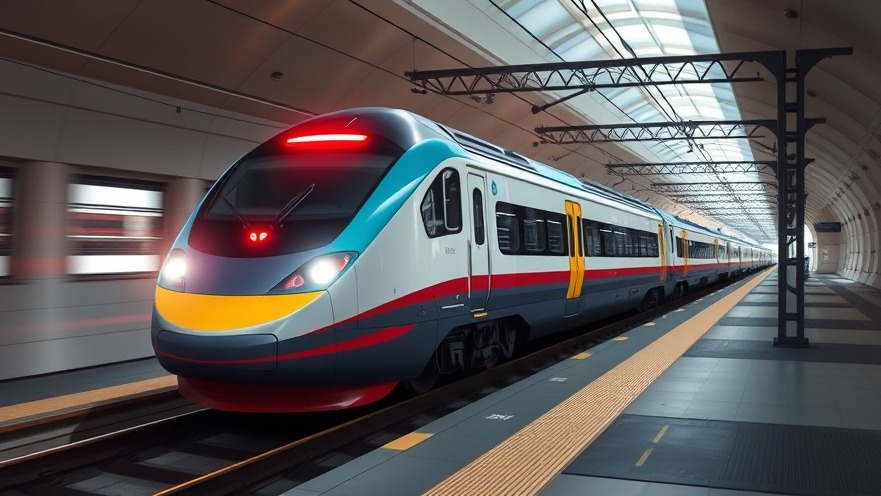
A New Era of Transportation: Tyler's Light Rail Proposal
In an ambitious move towards modernizing urban transport, the city of Tyler, Texas, is considering the introduction of a light rail system. With a population approaching 250,000, driven largely by a booming health care sector, Tyler's leaders are proactive in seeking solutions to the ever-growing traffic congestion affecting residents and visitors alike. With almost 2,000 new residents arriving each year, especially those seeking medical care unavailable in outlying areas, the city faces pressing transportation challenges that could have significant implications for its future development.
Recognizing the Growing Need
As Tyler's Metropolitan Planning Organization director, Michael Howell, stated, “There is a finite amount of space, a finite amount of parking.” The increasing number of vehicles on the road leads to congestion, particularly in hot spots like the medical district, which is becoming more challenging to navigate due to the presence of hospitals, a medical school, and educational institutions. The congestion problem is compounded during peak times, making the introduction of alternative transportation options not just a luxury, but a necessity for enhancing quality of life.
Light Rail: A Viable Solution?
Experts in urban planning, such as Yonah Freemark from the Urban Institute, suggest that effective public transportation systems have been crucial in cities like Seattle, which has managed to grow its population without an equivalent increase in car usage. However, creating such a system is complex and requires thoughtful planning and community engagement. Howell’s outreach to residents aims to gauge their interest in utilizing a light rail system, asking, “If it were there, would you use it? And how would you use it?” This feedback will be essential in shaping the proposal's framework.
Comparative Directions: Lessons from Other Cities
While Houston's existing light rail system provides an important model, city planners also recognize that simply investing in public transit does not guarantee a significant reduction in road congestion. Houston, which continues to develop its extensive freeway system, still faces some of the most severe traffic bottlenecks in the nation. These lessons underline the necessity of an integrated approach—one that balances public transit with road development and active transportation options.
Public Sentiment and Community Engagement
Tyler's city planners are not merely pushing through a top-down decision. Instead, they are prioritizing public input, recognizing that successful transportation initiatives rely heavily on community support. Citizens will need to envision the benefits light rail could provide—less time spent in traffic, easier access to central areas, and reduced environmental impact stemming from fewer vehicles on the roads.
Looking Ahead: Implications for the Region
The potential for a light rail system in Tyler is not only significant for local traffic management; it heralds broader implications for East Texas as a whole. As a health care hub, Tyler's accessibility affects surrounding rural communities that often travel to the city for services. Establishing efficient and reliable transportation systems can create new job opportunities and encourage further economic development. Moreover, addressing traffic concerns through public transit could position Tyler to attract more long-term residents and businesses seeking a quality lifestyle in a growing metropolis.
Conclusion: The Path Forward
As Tyler navigates this potential transformative era of transportation, the critical focus will be on community feedback, careful planning, and a balanced approach to urban development. The city finds itself at a crossroads, with the opportunity to pioneer a light rail system that could redefine transit options in Texas. With continued input from residents and collaboration across sectors, Tyler could forge a new transportation route that prioritizes both futuristic transport solutions and improved quality of life for its growing population.
 Add Element
Add Element  Add Row
Add Row 



Write A Comment